Protea lacticolor
| Botanical Name | Protea lacticolor |
|||||||||||||||||||||||||||||||
| Family | Proteaceae - The Protea family
|
|||||||||||||||||||||||||||||||
| Pronunciation | PROH-tee-uh lak-tee-KOL-or |
|||||||||||||||||||||||||||||||
| Common Name(s) |
English: Hottentots Holland Sugarbush; Hottentot Sugarbush
Afrikaans: Hottentot-Suikerbos; Witsuikerbos; Witsuikerboskan; Hotnotwitsuikerbos
|
|||||||||||||||||||||||||||||||
| Plant Group |
|
|||||||||||||||||||||||||||||||
| Plant Size |
|
|||||||||||||||||||||||||||||||
| Position |
|
|||||||||||||||||||||||||||||||
| General Information |
|
|||||||||||||||||||||||||||||||
| Specific Information | Protea lacticolor is a large, shrub or small tree with a single main stem. It forms a slender, neat, erect shape from 2 to 6 meters tall. It belongs to the White Sugarbush group. The leaves are blue-green, hairy when young, with a distinct red margin. Flowers are oblong to funnel shaped and relatively small at 6 to 8 cm long. The bracts vary in colour from cream to pink. According to the Red List of South African plants, Protea Lacticolor is endangered and decreasing in its natural habitat, with subpopulations occurring at only eight known locations. The habitat is densely invaded with alien pine trees at some subpopulations, while the reason for the decrease in numbers in the northern subpopulations is unknown.
|
|||||||||||||||||||||||||||||||
| Ad Break | ||||||||||||||||||||||||||||||||
| Flowers | ||||||||||||||||||||||||||||||||
| Description | small, oblong to funnel shaped heads, 6 - 8 cm in length |
|||||||||||||||||||||||||||||||
| Season |
|
|||||||||||||||||||||||||||||||
| Colour |
|
|||||||||||||||||||||||||||||||
| Growth Rate |
|
|||||||||||||||||||||||||||||||
| Plant Uses |
|
|||||||||||||||||||||||||||||||
| Distribution and Habitat | in the Western Cape from Bain's Kloof to the Hottentots Holland Mountains, amongst other fynbos and along stream banks, forming dense thickets on moist Cedarberg shale on south and east aspects |
|||||||||||||||||||||||||||||||
| Planting Suggestions | Protea lacticolor will grow in neutral, well drained soil. Proteas need very well-drained, nutrient poor soil in a sunny, airy position. They will not grow well in clay soils and will die if their roots are kept wet. If possible plant on a slope or on slightly elevated mound to prevent drainage problems. In the cooler summer rainfall regions try for a north facing slope. Dig a hole twice the width of the container and one and a half times the height. Do not apply artificial fertilizer or fresh manure to the soil mix. Mulch well around the plant but keep the area around the trunk of the plant clear, as the crown of the plant must be able to dry off. Proteas have a dense network of fine roots just below the surface of the soil and no cultivation should take place below them as disturbance will damage the roots and possibly introduce fungal disease, resulting in the death of the plant. The use of a thick mulch of leaf litter and pine bark/needles will feed the plant, keep the soil cool and discourage weeds. Water well throughout the year but particularly during autumn-winter-spring. Always water in the early morning, preferably before the sun has fully risen. Tip young plants regularly to encourage branching. Remove the spent flower heads immediately after flowering to encourage a more compact bush. If growing Protea from seed, see this blog: http://kumbulanursery.co.za/blog/obtaining-and-growing-protea-seeds For more information about growing and care of Protea go to http://finebushpeople.co.za Most Protea losses are due to fungal diseases and by the time you notice the plant is in stress, it is usually too late to do anything to save the plant. The best control is preventative: water plants early in the morning; keep soil surface cool by mulching; do not over-fertilise, never use any form of animal manure and remove diseased plants immediately; do not over water in summer and never disturb the roots. Burn any diseased material. |
|||||||||||||||||||||||||||||||
| Lorraine's Garden Notes | The two specimens in my garden died from old age (about 40 years old), after a prolonged period of drought. About a year later I was delighted when 7 or 8 seedlings came up in the spring of 2010. They have grown quite fast and the strongest flowered this season (February 2013), producing six flowers. |
|||||||||||||||||||||||||||||||
| Medicinal Uses | No data found. |
|||||||||||||||||||||||||||||||
| Ad Break | ||||||||||||||||||||||||||||||||


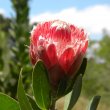
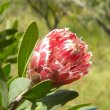

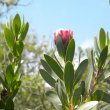
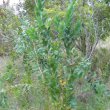
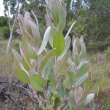



Discuss this plant
Share knowledge, ask a question or give an experience.